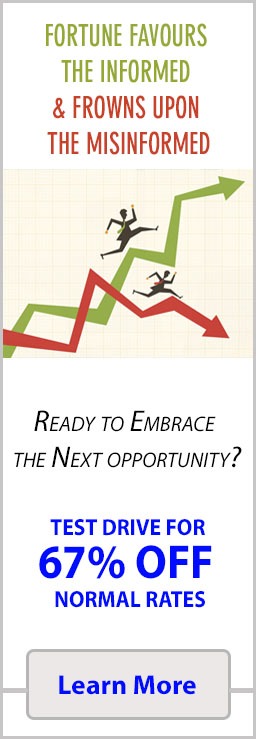401K Losing Money? Stop Buying Crap You Don’t Need
Oct 23, 2025
The Mask, The Motion, The Trap
Most Americans focus on the wrong problem with their retirement accounts. Yes, the fact that your 401(k) is losing money is real. But the bigger damage runs deeper: you’re wasting your life and your money buying things you don’t need to impress people you don’t like. The lifestyle debt compounds faster than the market ever could.
You scroll social feeds, see someone’s car, house, exotic vacation — your reptile brain lights up. You buy it. You go further into debt. Meanwhile, retirement contributions stay modest, risk tolerance stays low, even while you get told that your future self will buy the beach bungalow. Reality? Your future self is paying for your present self’s vanity.
Consider this phrase: “Every dollar not invested today is misery bought tomorrow.” That could become your mantra. You spend $50 K on showrooms, gadgets, expressions of status; you invest nothing. The market within you shrinks while the market for your peer-group glamour grows. People love misery. They love debt masked as freedom, because the poser life looks better on Instagram than the quiet compound interest of a 401 (k).
Financial writers often point to market volatility, crashes, and a 401 (k) losing money as the villains. But the silent antagonist is your consumer identity. Your mind says: “I need this phone, that watch, the premium gym membership, the location-shot holiday.” Your portfolio says: “I need growth, consistency, contributions.” The two are at war.
Turning a 401K into a fortress isn’t about timing markets; it’s about avoiding self-sabotage. The book The Market Within (if you’re familiar) teaches that the internal narratives you believe drive your outcomes. If you believe society’s script (“Work hard, consume conspicuously, retire late”), your actions follow the script and your 401K suffers. If you believe the script of restraint, early investment, simplicity — your compounder activates.
Ignore the myth that 401K losing money is always the fault of some guru or a market crash. The real fault line lies between your habits and your claims. Contribute early. Live modestly. Avoid the consumption treadmill. Because: if you invest today, you either look forward to the freedom behind the ticker, or you stay chained to the showroom of your illusions.
The Reckoning, The Build, The Escape
Here are three brutal truths to own if your 401K is struggling and your lifestyle is thriving.
First truth: You bought status, but status doesn’t compound. The car’s value depreciates, the gadget becomes obsolete, and the club membership loses novelty. Meanwhile, every dollar you didn’t invest costs you potential growth of 7-8% annually. Over 20, 30 years, that’s exponential. A thousand dollars today grows to ~$6,700 at 8% over 30 years. Spend that instead? You lose both the principle and the growth.
Second truth: You think you’re winning because you keep up with your peers; you’re actually losing because you’re ignoring the long game. In investing, a minor annual difference bleeds into massive lifetime differences. One less trip, one less luxury car, one more $500 monthly into your 401K — that choice matters more than you think.
Third truth: The market doesn’t care if your 401K is losing money due to market dips or due to you buying things. What matters is net outcome — contributions minus withdrawals minus fees minus lost opportunity. If you funnel cash into show-off consumption, you’ve already lost before the crash, before the “market losing period.”
Here’s a table to clarify that mindset:
| Habit / Behaviour | Reality | 401K Impact |
|---|---|---|
| “I’ll invest when I have more.” | Instant gratification dominates deferred payoff. | Zero growth while you wait. |
| “I need big purchases to signal success.” | Status spending signals only to others, not to the future you. | Less capital available. |
| “Market is scary so I’ll wait.” | Delay = lost contributions + lost compounding. | Time is the secret weapon. |
| “I maxed out credit for lifestyle.” | Debt kills returns through interest and risk. | Your 401 (k) gets interest drained instead of growth. |
| “My 401K is losing money so I’ll stop investing.” | Stopping contributions in down markets gives up bear-market bargains. | Less shares, fewer years compounding. |
| “I’ll throw in a lump sum when I feel ready.” | A lump sum doesn’t beat consistent contributions + time. | You lose both time and discipline. |
You see the pattern: it’s not just the market losing part. It’s lifestyle choices, timing, discipline, and psychological scripts that feed the habit. The data about crashes, drawdowns, and markets losing money is real (for example, the connection between paying too much for quality assets or entering the market at its peaks). (James Clear) But they pale next to the insidious drag of self-inflicted loss.
Live for the show. Retire for pain.
Here’s your rewrite: “That car might look like freedom; your compounding investments know it’s a chain.” If you shift even $500 a month from flashy spending into your 401K, for 30 years at 8% return you accumulate ~$520k. Spend the $500 monthly instead? You have nothing invested and no incremental freedom. The motion is the same, the destination radically different.
The message from The Market Within (and other behavioural-finance studies) is clear: the bigger risk isn’t market losses, it’s behavioural losses. Your perception, your habit, your stories — they dominate. If you’re told to invest more but instead invest in fantasies, you’re self-sabotaging.
Now, get moral if you like. Or get practical. Start by automating your 401K contributions. Drop one major status line item. Start thinking of every dollar spent on ego as a dollar robbed from your future. You’ll still look like someone who’s “doing things” — now you’re just doing the right things: fewer toys, more freedom.
If your 401 (k) is losing money, use it as a trigger to examine your consumption, not to buy more signals. Then invest, early, often, and consistently. Let the market be the mountain you scale, not the distraction you dodge.
Final Affirmation:
“Every dollar diverted from consumption into the 401K is a brick laid in your future fortress.”
There you have it. If you’d like, I can update this with specific data on 401 (k) loss rates, average contribution patterns, and typical lifestyle debt levels in America — to provide bulletproof context.
Food for the Mind















